Basic Information
-
Targeting strategy

-
Gene targeting strategy for B-hIFNAR1/hIFNAR2 mice. The exons 2-9 of mouse Ifnar1 gene that encode the extracellular region were replaced by human IFNAR1 exons 2-9 in B-hIFNAR1/hIFNAR2 mice. The chimeric CDS consists of human IFNAR2 extracellular domain and mouse Ifnar2 intracellular region was inserted into mouse ifnar2 gene locus in B-hIFNAR1/hIFNAR2 mice.
-
Protein expression analysis

-
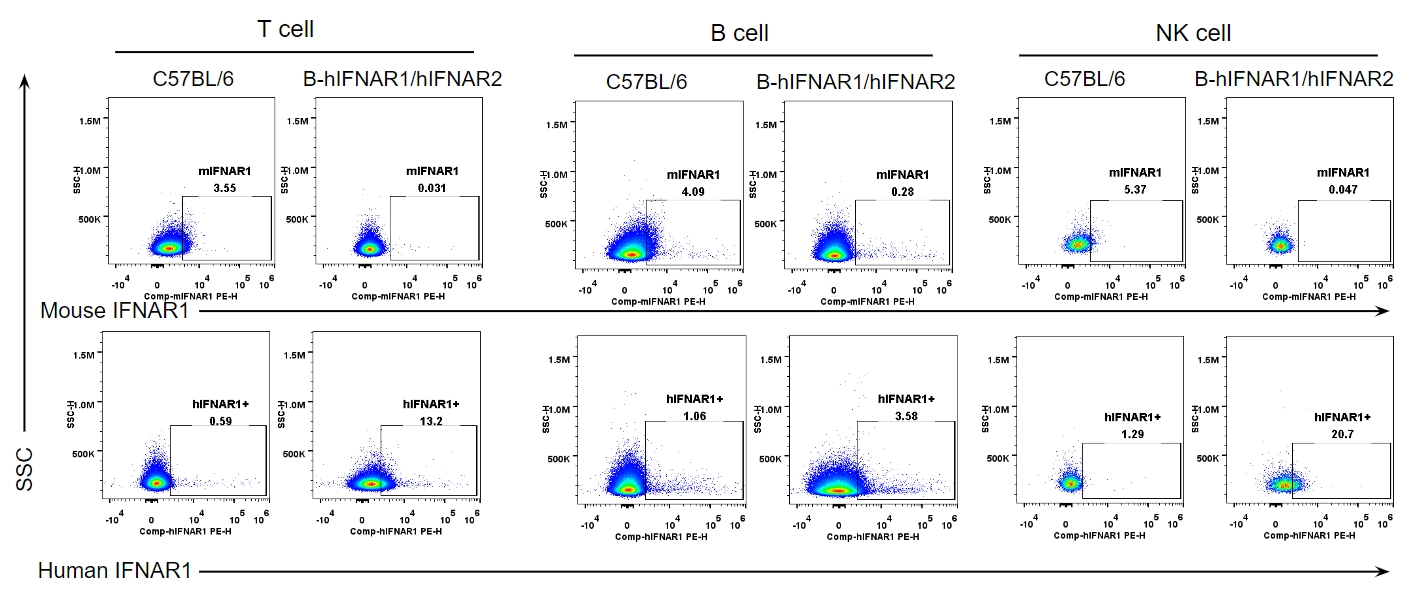
Human IFNAR1 expression analysis in wild-type C57BL/6 and B-hIFNAR1/hIFNAR2 mice by flow cytometry. Splenocytes were collected from wild-type C57BL/6 and homozygous B-hIFNAR1/hIFNAR2 mice. Mouse IFNAR1 was detectable exclusively in B cells, T cells, and NK cells of wild-type mice. Human IFNAR1 was detectable in B cells, T cells, and NK cells of B-hIFNAR1/hIFNAR2 mice but not in wild-type mice.
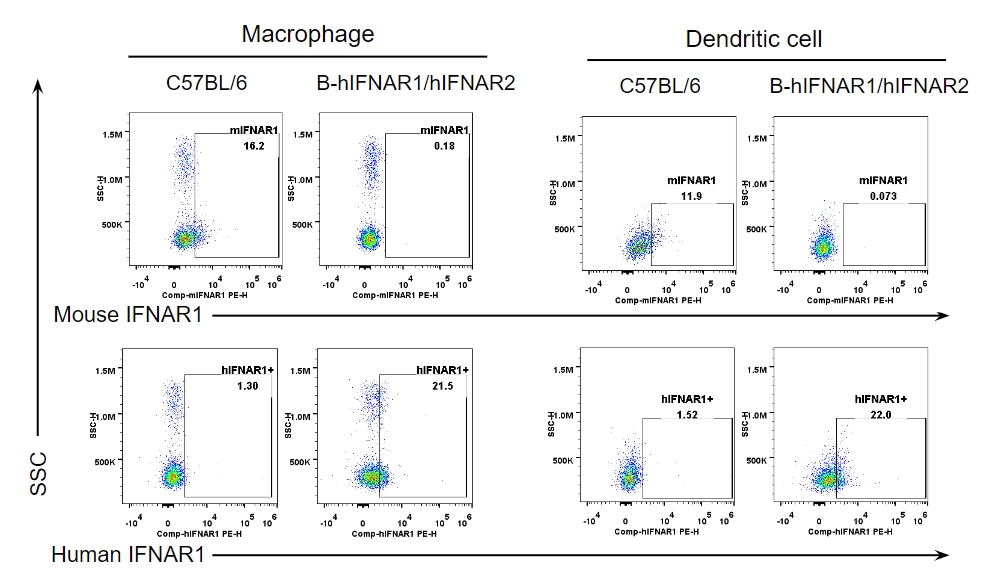
Human IFNAR1 expression analysis in wild-type C57BL/6 and B-hIFNAR1/hIFNAR2 mice by flow cytometry. Splenocytes were collected from wild-type C57BL/6 and homozygous B-hIFNAR1/hIFNAR2 mice. Mouse IFNAR1 was detectable exclusively in macrophages and dendritic cell of wild-type mice. Human IFNAR1 was detectable in macrophages and dendritic cell of B-hIFNAR1/hIFNAR2 mice but not in wild-type mice.
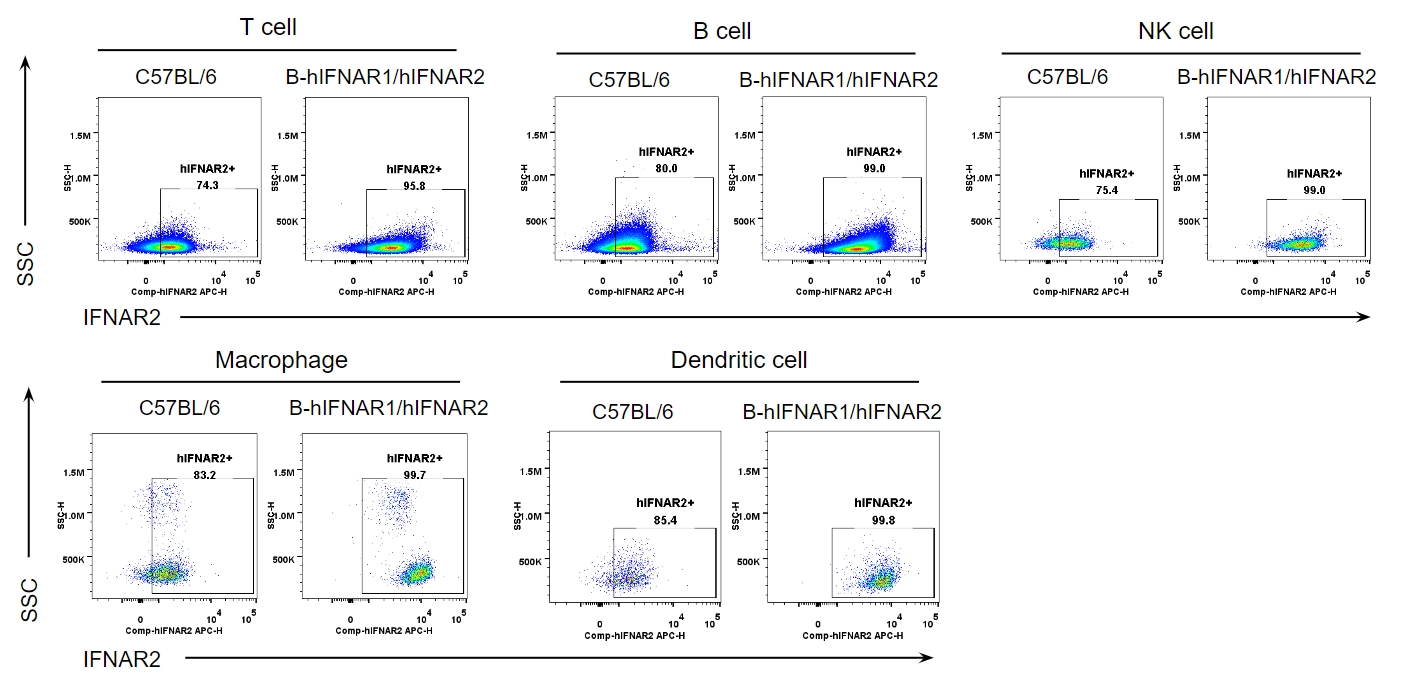
Human IFNAR2 expression analysis in wild-type C57BL/6 and B-hIFNAR1/hIFNAR2 mice by flow cytometry. Splenocytes were collected from wild-type C57BL/6 and homozygous B-hIFNAR1/hIFNAR2 mice. IFNAR2 was both detectable in B cells, T cells, NK cells, macrophages and DC cells of B-hIFNAR1/hIFNAR2 mice and C57BL/6 mice because the antibody have species-cross reaction.
-
mRNA expression analysis

-
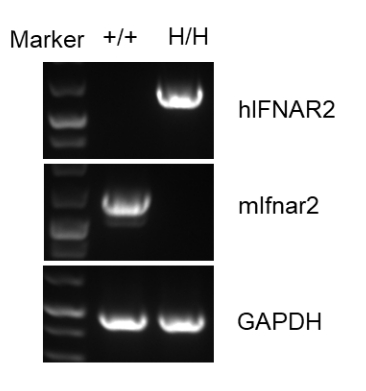
Strain specific analysis of IFNAR2 mRNA expression in wild-type C57BL/6 mice and B-hIFANR1/hIFNAR2 mice by RT-PCR. Spleen RNA were isolated from wild-type C57BL/6 mice (+/+) and homozygous B-hIFANR1/hIFNAR2 mice (H/H), then cDNA libraries were synthesized by reverse transcription, followed by PCR with mouse or human IFANR2 primers. As shown, Mouse Ifnar2 mRNA was detectable only in wild-type C57BL/6 mice. Human IFANR2 mRNA was detectable only in homozygous B-hIFANR1/hIFNAR2 mice, but not in wild-type mice.
-
IFNA2 induced the phosphorylation of Stat1 in splenocytes

-
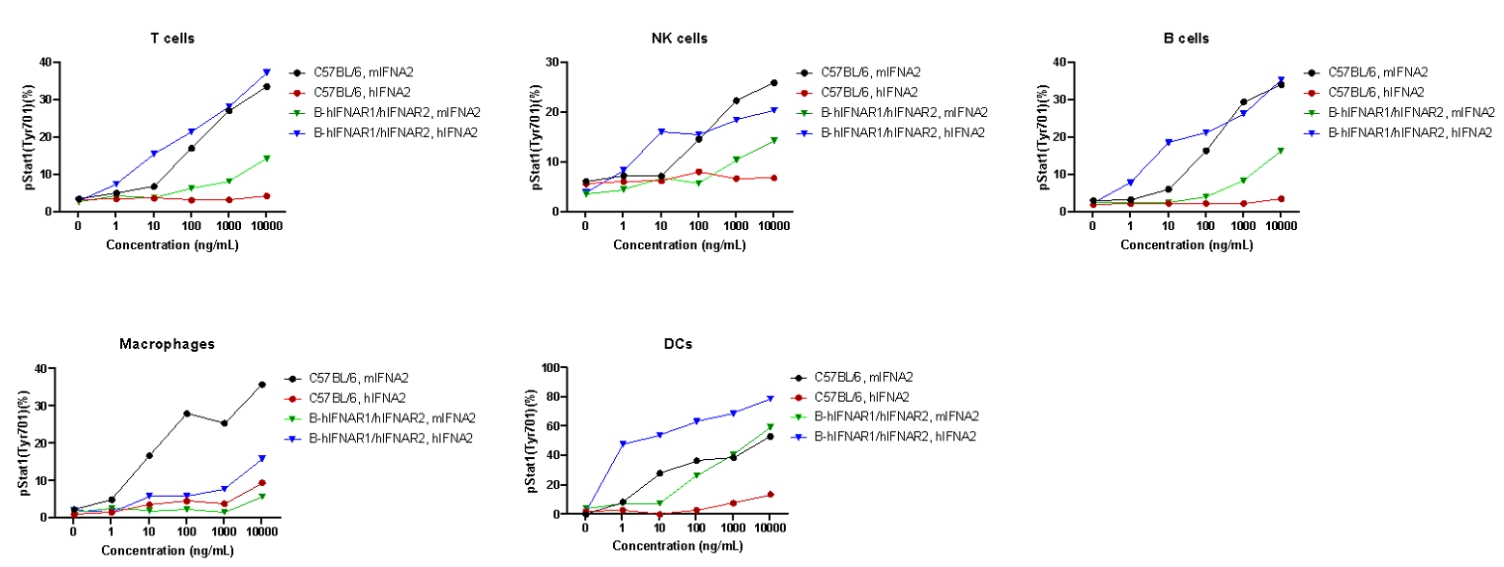
Analysis of the phosphorylation of stat1 in B-hIFNAR1/hIFNAR2 mice by flow cytometry. Splenocytes from wild-type C57BL/6 mice and homozygous B-hIFNAR1/hIFNAR2 mice were stimulated with mouse IFNA2 and human IFNA2 in vitro. Then FACS was performed to assay the phosphorylation of stat1. Mouse IFNA2 induced the pStat1 expression increase in wild-type mice in a dose-dependent manner. While, human IFNA2 only induced the pStat1 expression in B-hIFNAR1/hIFNAR2 mice.
-
Summary

-
- mRNA expression analysis:
Human IFNAR2 mRNA was detectable in splenocytes of homozygous B-hIFNAR1/hIFNAR2 mice.
- Protein expression analysis:
Human IFNAR1 was detectable in B cells, T cells, NK cells, macrophages and dendritic cells of B-hIFNAR1/hIFNAR2 mice.
Human IFNAR2 was detectable in B cells, T cells, NK cells, macrophages and dendritic cells of B-hIFNAR1/hIFNAR2 mice.
- Function assay:
Human IFNA2 induced the phosphorylation of Stat1 in B-hIFNAR1/hIFNAR2 mice in a dose-dependent manner.


